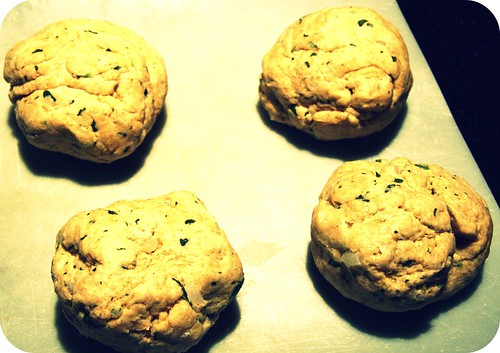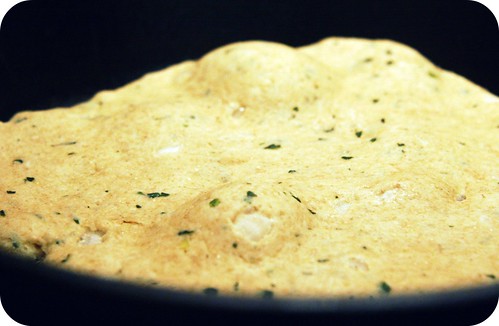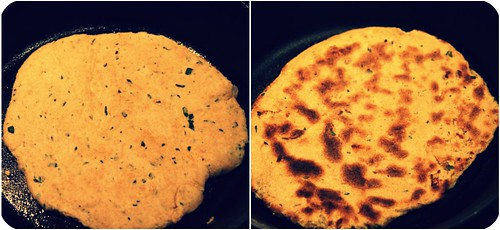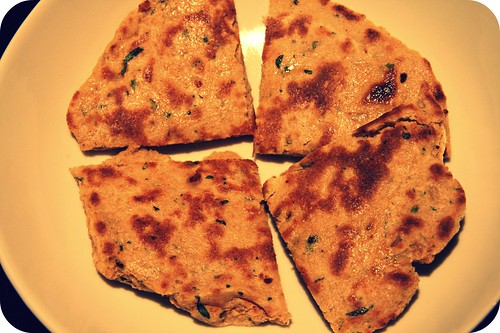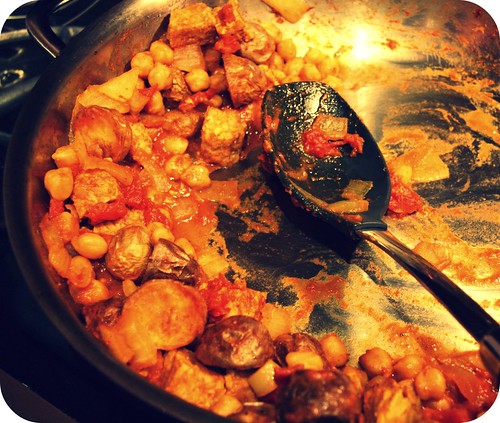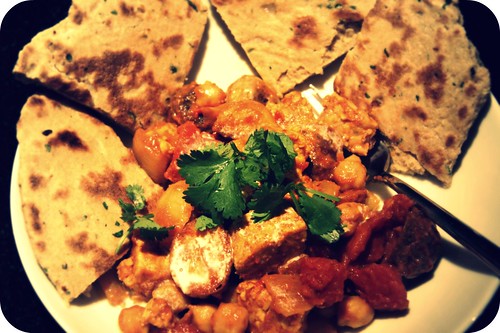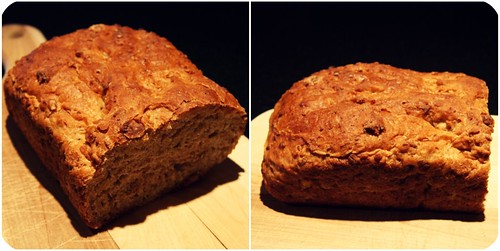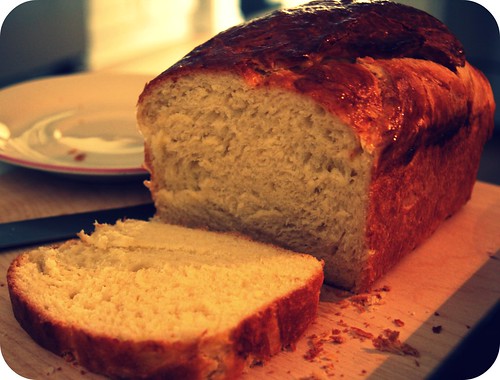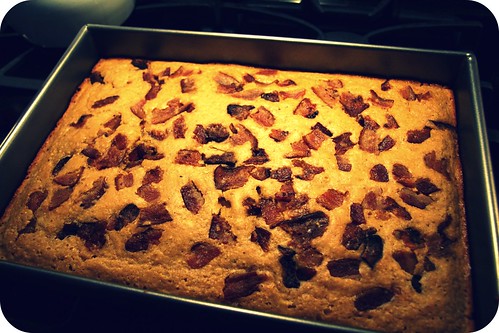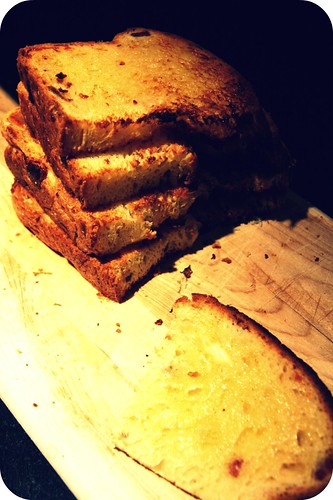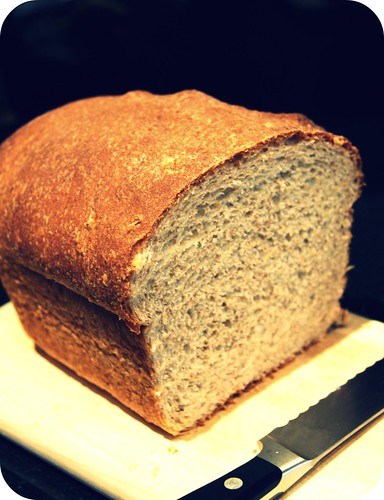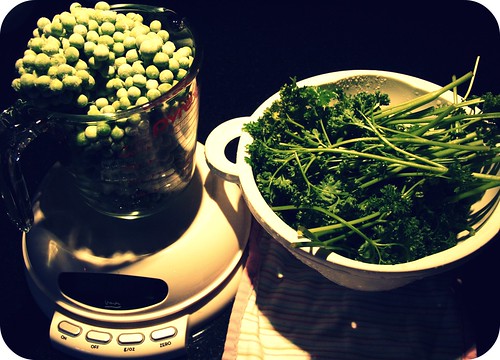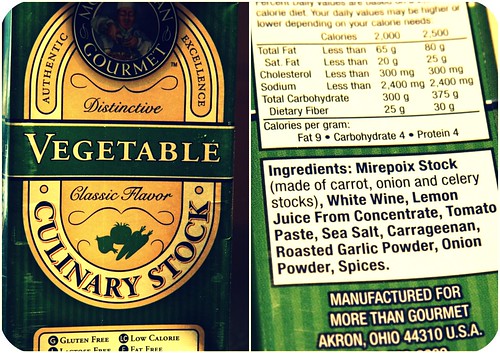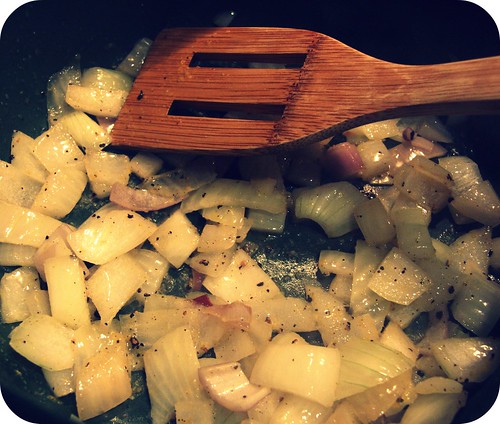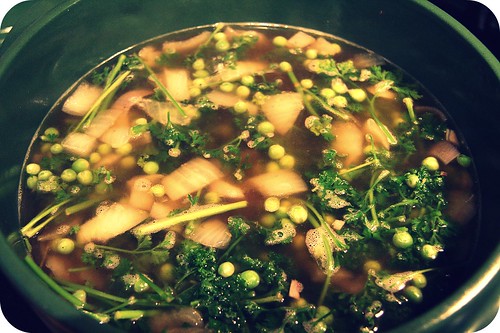Evidently, "roti" is a kind of flatbread. I acquired this bit of knowledge from one of the fabulous cookbooks I received during the week that happens to include both my birthday and Christmas (an arrangement about which some similarly-birthdayed-and-religioned-and/or-cultured people complain but which I have always found kind of rad). The cookbook that inspired the recipe herein is called Warm Bread and Honey Cake: Home Baking from Around the World. Heidi at 101cookbooks.com raved about it a while back but I'm pretty sure I would have put it on my wish list even without her recommendation. The title alone gets me. Warm and bread and honey and cake are excellent, enticing words to me no matter how they are arranged. Let alone the phrases "home baking" and "around the world." Title aside, the photos and recipes are wonderful, although so far I've started small, trying my hand at a simple flatbread leavened with baking powder rather than yeast (there are many yeasted bread recipes in the book).
I have two things to tell you following making these flatbreads:
1. Flatbread is v. easy to make.
2. My several-year-old (but quite teeny) cast iron skillet is finally, officially, perfectly seasoned. I love it so much that I am going to buy another, larger one and plan on getting it properly seasoned much more quickly than the last. It's less daunting the second time. Why do you care? Because cast iron skillets are ideal for making flatbreads. If you have one and it is at least preliminarily seasoned and you plan on making flatbread, use it.
Here are my four flatbread balls.
Here are the fascinating bubbles that form during the cooking process.
Here is a before and after comparison.
And here is what I like to think is a v. professional shot of the finished product.
We ate it with the curry recipe I posted a while back.
Thick Onion & Cilantro Roti
Yield: 4 six-to-seven-inch rotis
1 2/3 cups whole wheat pastry flour
2 1/2 teaspoons baking powder
1/2 teaspoon salt
1 teaspoon honey
1 tablespoon finely chopped onion*
1 tablespoon finely chopped cilantro or parsley*
2/3 cup lukewarm water
1 tablespoon olive oil, plus more for brushing before serving
Mix all ingredients with your hands or a wooden spoon to form a supple dough. Shape into a ball and put the dough in an oiled bowl. Cover with plastic wrap or a towel and allow to rest for 30 to 60 minutes. When it's time to cook them, preheat oven to 200 degrees and have an oven-proof dish ready that you can use to keep the rotis warm. Re-knead the dough and form four evenly-sized balls. Roll each ball into a 6 to 7" circle. Dredge with a bit of flour if the dough is too sticky to work with. Preheat your cast iron pan. Add one roti add a time and cook on each side until brown spots begin to form, about 4-5 minutes on the first side and a little less on the second. Brush immediately with oil (or butter or ghee or something else delicious) and place on a dish, cover, and put in preheated oven.
*These were v. mild flatbreads. Doubling (or, heck, quadrupling) the onions and/or herb of your choice would be fine if you wanted something more flavor-forward.

